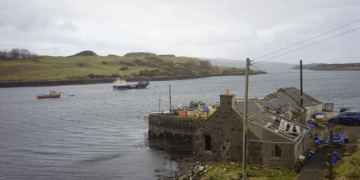In the Caribbean, he is known as William Kofi Nti, the son of a wealthy king in West Africa who would leave a mark in their land as proof of his existence and stay in Trinidad in the 1880s. However, his real name is Nana Kofi Ntim, son of Asantehene King Karikari, who was the 10th ruler of the powerful Ashanti Kingdom in present-day Ghana that battled the British for over 400 years before their land came under British rule.
Son of Afia Kobi, King Karikari ruled the Asante Kingdom between May 28, 1867, and his forced abdication on October 26, 1874. He succeeded his grand uncle, Nana Kwaku Dua I whose real name was Barima Fredua Agyeman. During his rule as king, he continued the war with the British to protect his kingdom and continued the war with weaker kingdoms to expand the Ashanti Kingdom.
The war with the British became more complicated for the Ashanti who had seen several other tribes in the Gold Coast seek protection from the British and in turn join them to fight. In March 1874, King Karikari signed a peace treaty with the British known as the Treaty of Fomena which ended the Sagrenti War of 1873-1874 that led to the looting of the Ashanti palace and burning of Kumasi. The war was named after the then British Army Commander, Sir Garnet Wolseley.
The 1874 Treaty of Fomena signed by King Karikari required that the Ashanti pay an indemnity of 50,000 ounces of gold, renounce claims to Elmina for the British and remove their army from the coastline so that trade could continue. In return, the British were expected to release all Ashantis who had been captured.
King Karikari negotiated that two royal sons be taken to England to be educated while the British who now had full control over Elmina allowed the Ashanti to dominate trade. This was agreed on and Kofi Ntim, who was the son of the King and another royal were taken to England.
Of the two royals that were taken to England, Prince Kofi Ntim is the only one who survived, unfortunately, his royal relative had died in England a few months after arrival and commencement of school as promised to the King. With the aim of sticking to their end of the bargain, Prince Kofi Ntim was taken to the Caribbean where he was most likely to survive as the climate was very similar to Africa’s.
According to articles written by Sir Francis Fuller, Prince Kofi Ntim was baptized in the UK and given the English name William. He was then educated in both England and Trinidad and after, was given an appointment in Trinidad and worked closely with the army and the governor. On arrival in Trinidad, he was placed under the care of Mr James Henry Collins, the headmaster of the Boys Model School, Tranquility, Port of Spain.
He is most remembered for designing and leading in the construction of
a Victorian-style building in 1883 on the hills to the west of Port of Spain in Trinidad and Tobago which was then used as a signal station for the port and army. Inspired by the designs from home in Africa and Britain, Kofi Ntim was given the contract by the British to design the signal station which replaced parts of Fort George.
After completion of the signal station, he embossed his initials W.K.N which have since been erased due to rehabilitation.
In 1886, he left Trinidad for Sierra Leone making a stop in Barbados where he was warmly received and celebrated by the West African community many of who were for the first time seeing a direct royal from their land. While in Sierra Leone, Kofi Ntim worked as an interpreter for many people including King Prempeh before his exile in Seychelles.
After working in Sierra Leone for a while, he was appointed to work in the Gold Coast where he planned to establish a relationship with his people. Unfortunately, the bond went sour due to cultural differences and Kofi Ntim moved back to England where he lived until his death.
The signal station that he built has been maintained and undergone several renovations. Tourists are allowed to visit the beautiful building in Trinidad and Tobago.
source: Face 2 Face Africa



















































